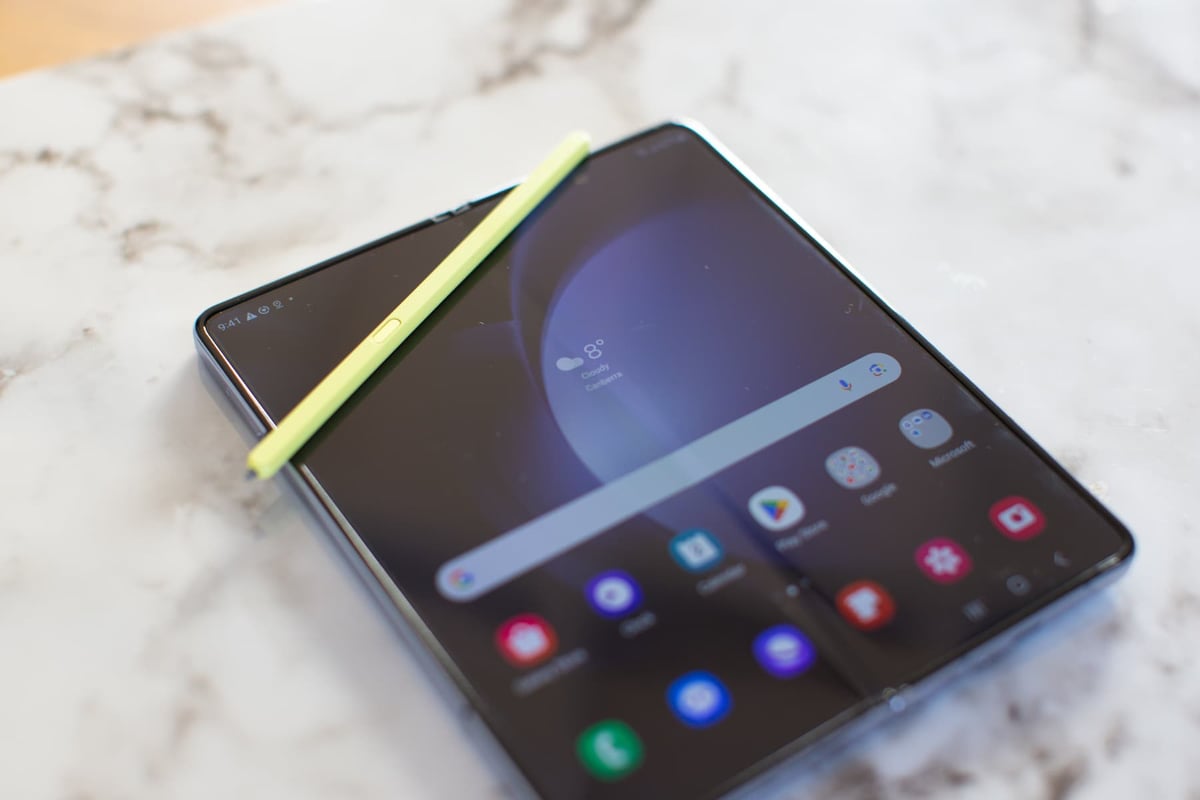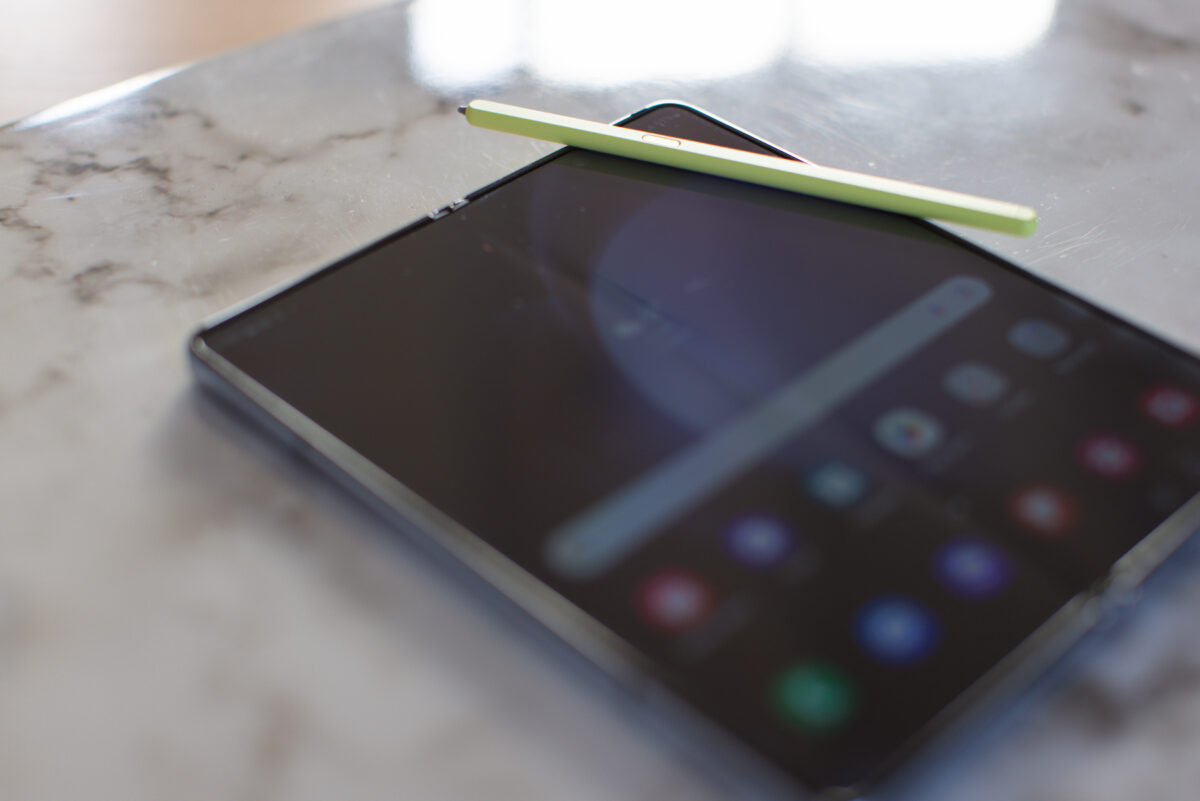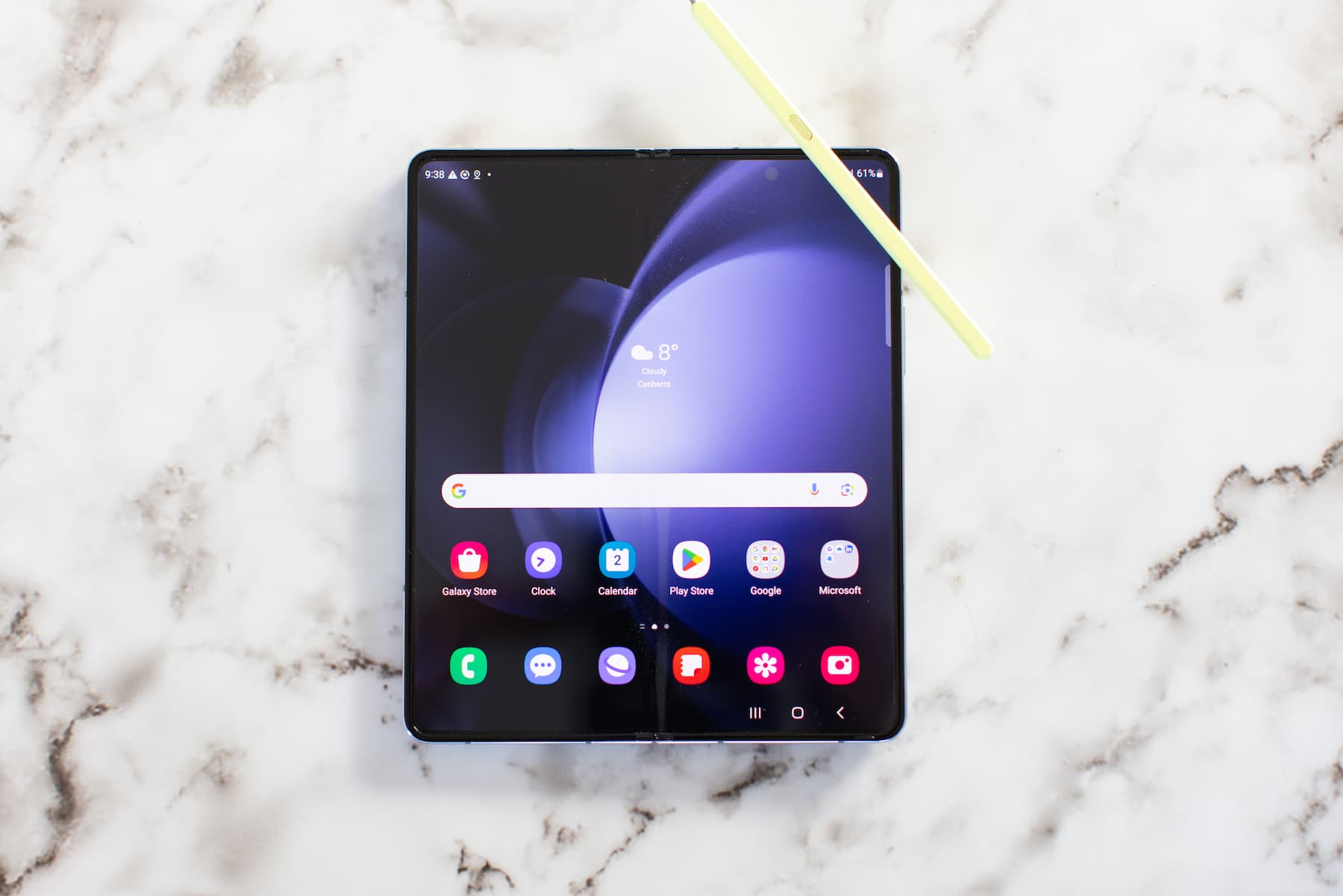A better hinge, a brighter display and a much lighter design: I could just end my Samsung Galaxy Z Fold5 review with that sentence. The latest Samsung Fold is, as many expected, an iterative upgrade from the previous generation. Yet it’s clear this phone isn’t geared towards getting Fold4 owners to go through the motions; it’s just an excellent device designed to attract standard phone users to finally make the switch.
Because it’s not necessary for someone who already owns a Samsung Galaxy Z Fold4 to purchase a Fold5. It’s nice, of course. And the trade-in scheme makes it more attractive to upgrade. Just know that while this is not a vast improvement, it’s a smart refinement of an already great product. But there are not any meaningful changes; no new headline features that’ll change the game.
But changing the game was never the idea. Inviting more players was.
Samsung Galaxy Z Fold5
Excellent
83/100
SCOREPROS
- Sturdier hinge with no gap
- Much lighter design
- Software makes multitasking much easier
- Bigger battery life
CONS
- Front screen is still too narrow
- Cameras aren’t the best
- Slow charging
Samsung Galaxy Z Fold5 Review – Table Of Contents
Samsung Galaxy Z Fold5 Review
Design

A lighter, thinner phone with a bigger screen. That’s not easy to achieve, so kudos must be given to the designers who have managed to make the Fold5 look and feel like a much more premium device than the Fold4. In fact, as great as the Fold4 is, last year’s device looks quite dated when sitting side-by-side with the Fold5.
There are a few reasons for this, one being the new Flex Hinge. The small design change makes a big difference. In building a streamlined hinge with fewer moving parts, Samsung has found a way to make it so that both screens can sit flush on top of one another when closed, with no perceptible gap. It’s not a functional change but Samsung’s new hinge helps make the phone feel much more premium. Which is what you’d want given the alarmingly high cost of owning one.
The Samsung Fold5 is 13.6 mm thick at the hinge; not a huge change on paper but one you can feel when you slide the foldable into your pocket. It doesn’t feel like a brick anymore. I’m walking around with this 256 g phablet and it feels no different from my iPhone 14 Pro.
When closed, the front screen is a narrow 6.2-inch OLED with a 120Hz refresh rate. Crisp with a wide colour range, sure. But it’s still much too narrow, which is the biggest critique aimed at foldable phones. The inner screen is much more compelling, with a 7.6-inch OLED panel that actually has wide viewing angles (something I never thought I’d write about a phone) and is rated for a very bright 1,750 nits. In other words, this display can be 30% brighter than that of the Z Fold4.
While the hinge has been fixed perfectly, the other big issue with the foldable design is the visible crease in phablet mode. You’ll still see it, especially outdoors in direct sunlight, but the designers have obviously worked to make it less prominent. This wasn’t an issue whenever I watched Stan, however. Once the display is on, the crease is harder to notice.
Still, much like the bezel on regular phones, the crease is always going to be a contentious issue with foldable phones.
The other thing about the display I wanted to mention is the S Pen. And if you’re buying a Fold5, you might as well fork out a bit extra for this separately-sold accessory.
Samsung has wisely reduced the size of the pen without compromising how smooth the writing experience is. However, there’s still no splot in the actual phone to insert the pen and charge it. That then makes it necessary to buy the official phone case, which has a spot for the S Pen. Luckily, the case isn’t unsightly and fits the phone without adding any additional bulk. I’d recommend the purchase because the S Pen substantially boosts the phone’s productivity, which is the mean reason to buy a foldable in the first place.
Performance

The S Pen really does boost productivity and makes using the Fold5 much smoother for just about everything, from multitasking to scribbling down notes. But none of that would matter much without the Fold5’s zippy Snapdragon 8 Gen 2 for Galaxy chipset. The substantial boost in speed and graphics means a better overall experience on either display, but that much was expected.
What is more meaningful is how the software has been refined to make multitasking easier. Because being able to use multiple apps at once without having to open up a drawer and rotate can be a valuable time-saving exercise for office workers and content creators. The PC-esque taskbar has a much better layout now, making it easier to find recently used apps and engage them with a split-screen.
I’ve tried pushing the performance with a few mobile games but I don’t have the sensibility for anything overly graphic-intensive like Genshin Impact.
Camera

The cameras are better, although mostly because of software and post-processing. The design for the bump has also improved, shrinking ever so slightly to become less prominent so the phone doesn’t wobble as much when on a table.
Yet, there’s still the sense that you’re compromising on camera performance if you want a foldable. That’s true. If you want a phone that takes incredible photos, you’re better off going for the top-tier Samsung Galaxy S23 Ultra.
That’s not to say the company hasn’t done some impressive work here. The primary 50 MP camera is supported by a 12 MP ultrawide sensor and a 10 MP telephoto lens. And the results are impressive, especially when it comes to brightening up shadowy areas. However, there are better cameras out there for capturing really vivid, crispy and true-to-life details. I would say the processing is prone to overexposure based on my experience but note that I’ve only spent time a week with the Z Fold5.
I haven’t gotten hands-on with the Google Pixel Fold either, because it hasn’t launched in Australia yet. When Google does decide to actually bring its first foldable phone down under, I’d be very interested to see the side-by-side results of a shot taken with the Z Fold5 and the same taken on the Pixel Fold. Based on my experience with both companies, I’m willing to bet the Fold will be better at night shots and portrait, while the Samsung will be better at those really bright, vivid shots if there’s a good source of natural light.
RELATED: The Best Smartphones Under $1,000
Battery

Like the cameras, the hardware for the battery hasn’t changed from the previous generation. You’ve still got a meaty 4,400 mAh juicer sitting in the Fold5. Although it’s made more efficient with the Snapdragon 8 Gen 2 chip.
As such, you’ll likely get around 11 hours from regular use. That’s nowhere near the battery performance of a regular phone, so as mentioned above you’ll have to expect a massive compromise on battery life if you want a productivity-focused phablet.
25W charging also isn’t very impressive at all. Especially not in 2023. I’m not sure of the reasons why Samsung couldn’t work up fast charging for the Z Fold5. To compare, the high-end Galaxy 23 Ultra offers 45W charging, so this is almost half as fast on paper.
Verdict & Value

In Australia, a Samsung Galaxy Z Fold5 is going to cost you at least $2,599 for the 256 GB model, $2,799 for the 512 GB model and a whopping $3,149 for the 1 TB model. This isn’t an investment any average income earner should take lightly.
The question is: is Samsung offering enough value to justify such a high price tag? For that to be a yes, you’d have to be someone who desperately needs the ability to multi-task on a phone and has already decided to get into the foldable market while it’s still relatively young.
This isn’t the type of investment you make just because you want the latest phone. The Samsung Galaxy S23 Ultra starts from $2,649 so you’re better off going for that if you don’t need to multitasking efficiency of a foldable.
Samsung has made a brilliant hybrid phone and tablet here. Of that, there is no doubt. The small design tweaks do make a big difference and even if the software feels like an iterative update, the Z Fold5 is really the foldable to beat right now. At least that’s my opinion right now. Again, I haven’t gone hands-on with the Google Pixel Fold just yet.
Samsung Galaxy Z Fold5 Specs (VS Google Pixel Fold)
| Specification | Samsung Galaxy Z Fold5 | Google Pixel Fold |
| Main Display | 7.6-inch QXGA+ Dynamic AMOLED 2X | 7.6-inch Foldable OLED |
| Cover Display | 6.2-inch HD+ Dynamic AMOLED 2X | 5.8-inch OLED |
| Refresh Rate (Main) | 120Hz Adaptive Refresh Rate | 120Hz Adaptive Refresh Rate |
| Refresh Rate (Cover) | 120Hz Adaptive Refresh Rate | 120Hz Adaptive Refresh Rate |
| Dimensions (opened) | 129.9 x 154.9 x 6.1 mm | 158.7 x 139.7 x 5.8 mm |
| Dimensions (closed) | 67.1 x 154.9 x 13.4 mm | 139.7 x 79.5 x 12.1 mm |
| Weight | 253 g | 283 g |
| Camera (Rear) | 12 MP (Ultra-Wide), 50 MP (Wide-Angle), 10 MP (Telephoto) | 48 MP (Wide-Angle), 10.8 MP (Telephoto), 10.8 MP (Ultra-Wide) |
| Camera (Cover) | 10 MP Selfie Camera | 8 MP (Wide), 9.5 MP (Wide) |
| Processor | Snapdragon 8 Gen 2 Mobile Platform for Galaxy | Google Tensor G2 |
| Memory | 12 GB | 12 GB |
| Storage | 256 GB, 512 GB, 1 TB | 256 GB, 512 GB |
| Battery | 4,400 mAh Dual Battery | 4,821 mAh |
| Operating System | Android 13 | Android 13 |
Frequently Asked Questions
How much does a Samsung Galaxy Z Fold5 cost in Australia?
The Samsung Galaxy Z Fold5 retails from $2,599 for the 256 GB model in Australia. A 1 TB model is also available at $3,149.
Is the Samsung Galaxy Z Fold5 any good?
Samsung has created its best foldable to date with the Samsung Galaxy Z Fold5. While battery and camera performance is still quite average, the design and software make it much easier to multitask and perform functions seamlessly.
What's the biggest change with the Samsung Galaxy Z Fold5?
The biggest change with the Samsung Galaxy Z Fold5 is the design of the phone. Samsung has created a sturdier hinge and managed to make a thinner phone that doesn’t feel like a brick in your pocket.
















